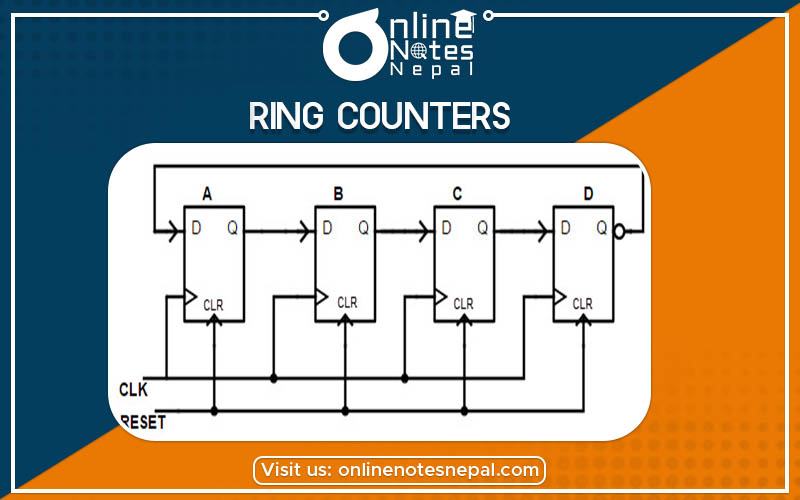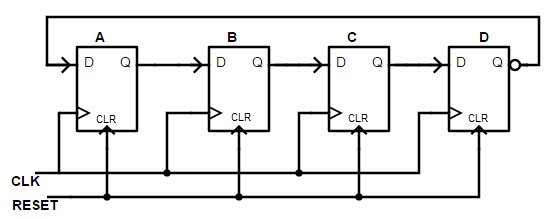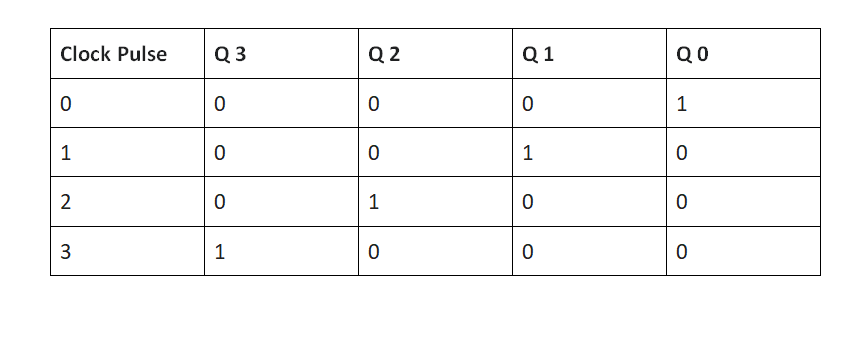Published by: Nuru
Published date: 22 Jun 2021

Ring Counters are one of the most common types of two shift registers. The other one is the Johnson Counter which is also a type of twisted ring counter. They are those shift registers which have serial outputs connected back to the serial inputs to produce certain sequences.
Ring Counter as per its name is generally a circulating shift register. These are the type of counter composed of flip-flops connected into a shift register, with the output of the last flip-flop fed to the input of the first, making a ring-like structure.
The above-given figure explains the connection of circuits in a ring counter. It has four flip-flops in a sequence. The above figure is a straight ring counter. Since the count sequence of the ring counter has four distinct states, it can be considered as a mod- four counter. There is the only use of four out of 16. This makes it inefficient in terms of state usage.

Fig: A 4- bit Ring Counter
We can use ring counters often in hardware designs such as ASIC designing to create finite state machines. They are lower density codes than normal binary encodings of state numbers. A binary counter can represent 2n states, where n is the number of bits in the code, whereas a straight ring counter can represent only n states. We prefer straight ring counters when a fully decoded or that counter state is needed where there are sets of code separated by 2, like in some sequence controllers. We do this so that any small bit can be detectable.
Besides this, the main advantage of a ring counter is that it can self-decode. There is no need for extra decoding in the circuit. This is done to find out the stage of the circuit.
